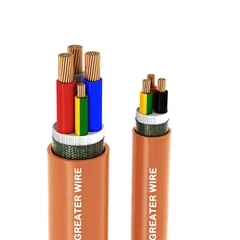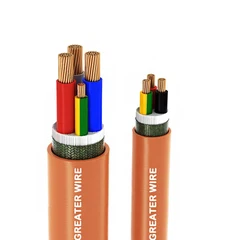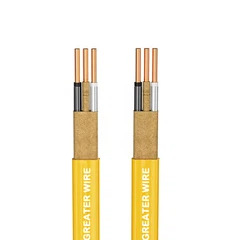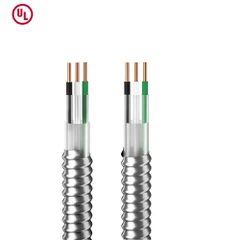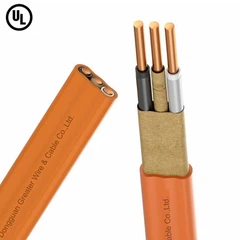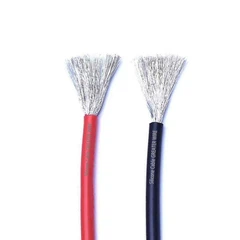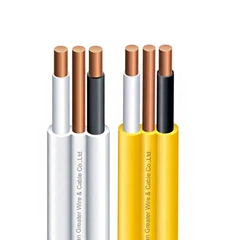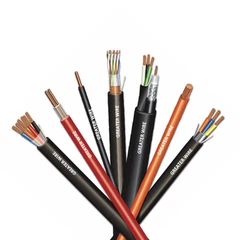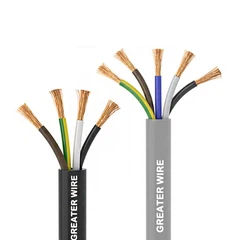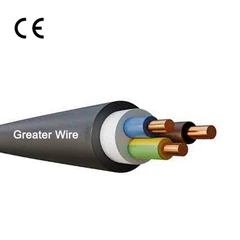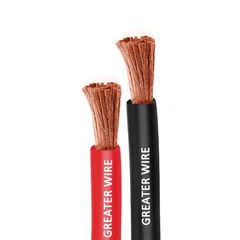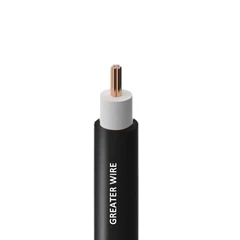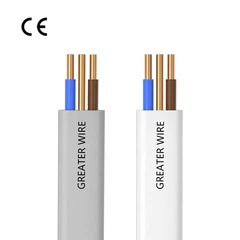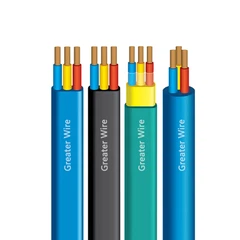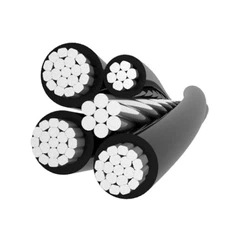The orange circular cable is a popular choice in various electrical and industrial applications, widely used for power transmission, control systems, and signal transmission. Recognized for its distinctive orange color, which enhances visibility, these cables are commonly found in construction sites, factories, and industrial plants. They are designed to offer durability, flexibility, and safety in environments where high visibility is essential. However, one common question that often arises in discussions about these cables is: "What is the standard length of an orange circular cable?"
In this article, we will explore the factors that influence the length of orange circular cables, the standards and practices around their lengths, how they are sold, and their applications in different environments. We will also discuss important considerations when selecting the appropriate length for specific projects, as well as the challenges and best practices when working with these cables.
What Is an Orange Circular Cable?
Before diving into the length considerations, it's essential to understand what an orange circular cable is. Orange circular cables are generally made of the following components:
Conductors: Typically made of copper or aluminum, the conductors are the core elements of the cable, responsible for carrying electrical current or signals.
Insulation: This layer surrounds each conductor to prevent short circuits and protect the current-carrying conductors from electrical leakage. The insulation is often made from materials like PVC (Polyvinyl chloride), rubber, or Teflon.
Outer Sheath: The outer sheath is a protective covering that shields the internal components of the cable from mechanical damage, environmental hazards (such as moisture, chemicals, or UV radiation), and temperature extremes. The distinctive orange color of the sheath makes it easier to identify and ensures safety in high-traffic or hazardous areas.
Orange circular cables are used in a variety of applications, including power distribution systems, communication systems, automation control systems, and industrial machinery. Due to their versatility and visibility, they are particularly suitable for environments where cables need to be clearly visible, such as construction zones, mining operations, or industrial factories.
Factors That Influence the Length of an Orange Circular Cable
The length of an orange circular cable is not fixed and can vary depending on several factors. These factors influence both how the cables are manufactured and how they are sold to customers. Below are the main factors that contribute to the length of an orange circular cable:
Manufacturing Standards and Practices Cable manufacturers often produce cables in standard lengths to ensure consistency, convenience, and ease of handling. The most common practice is to manufacture cables in reels or spools of predetermined lengths. The length of the cable on each reel is determined by the manufacturer's specifications, which can be based on industry standards or specific customer requirements.
Application Requirements The intended application for the cable often dictates the required length. For example:
Power transmission systems in industrial environments or construction projects may require longer lengths of cable to connect large distances between equipment, electrical panels, or power sources.
Signal or communication cables for control systems may be sold in shorter lengths, depending on the setup or layout of the electrical or communication network.
Some cables are designed for use in permanent installations, while others are intended for temporary or flexible setups. The application-specific requirements often influence the amount of cable needed, which ultimately determines the length.
Cable Type and Size Orange circular cables come in various sizes, ranging from small gauge cables used for signal transmission to large, heavy-duty cables used for power transmission. Larger cables with multiple conductors, thicker insulation, or enhanced durability may be produced in shorter lengths due to the increased weight and difficulty in handling. Smaller cables are often sold in longer rolls, making them more versatile for a wide range of applications.
Storage and Handling Constraints The physical size and weight of the cable also influence its length. Longer cables are often stored and shipped on large reels or spools. If the cable is too long, it may become difficult to handle, transport, or store. Thus, manufacturers typically produce cables in standard lengths that balance the practicality of shipping and storage with the needs of the consumer.
Customer Demand and Customization In some cases, customers may request specific cable lengths that deviate from the standard options available on the market. Manufacturers often accommodate these requests and provide custom lengths of cable for particular installations or projects. Customers can request cables in non-standard lengths based on their precise requirements, including pre-measured cuts for specific industrial systems, or tailored cables for construction projects.
Cable Standards and Regulations Industry standards and regulations can also play a role in determining cable lengths. Various standards organizations (such as the International Electrotechnical Commission or IEC, the National Electrical Manufacturers Association or NEMA, or Underwriters Laboratories or UL) may set regulations regarding the production of cables, including guidelines for length. These standards ensure that cables meet safety and operational requirements, ensuring that they can withstand the expected load and conditions during their use.
Common Standard Lengths of Orange Circular Cables
While there is no single "standard" length for all orange circular cables, manufacturers often produce them in certain common lengths, making it easier for customers to purchase and use cables in various applications. Below are some of the typical lengths of orange circular cables, based on common industry practices:
Standard Reels or Spools:
Cables are usually sold in rolls or reels, with standard lengths ranging from 50 meters (164 feet) to 1000 meters (3280 feet). These lengths are common for both power cables and communication cables.
Shorter Lengths: In some cases, manufacturers may offer cables in shorter lengths, such as 25 meters (82 feet) or 10 meters (33 feet). These shorter lengths are often sold for smaller-scale applications, where a large quantity of cable is not required.
Longer Lengths: For larger installations or projects, manufacturers may provide orange circular cables in longer lengths, such as 2000 meters (6560 feet) or even 3000 meters (9840 feet). These lengths are typically used for industrial-scale applications, large power distribution networks, or in situations where cables need to cover significant distances.
Custom Lengths:
Many manufacturers allow for custom cable lengths, depending on the project's requirements. For instance, a construction company may request several 50-meter sections of cable or request one continuous length of 200 meters to run power from a generator to a site. In this case, the customer's needs determine the final length of the cable.
Pre-cut Cables:
For certain applications, manufacturers may offer pre-cut cables in specific lengths. These pre-cut cables are commonly used in situations where precise cable lengths are needed for easy installation. For example, a cable supplier may sell pre-cut lengths of 10 meters or 50 meters for specific construction or electrical setups.
How Are Orange Circular Cables Sold?
Orange circular cables are typically sold in standard lengths determined by the manufacturer, with common reel lengths ranging from 50 meters to 1000 meters. However, as mentioned earlier, cables can also be customized to suit specific needs. Here are some ways that these cables are typically sold:
Reels or Spools: Cables are usually wound on reels or spools for easier handling and storage. These spools can vary in size, with some holding 100 meters, 500 meters, or even 1000 meters of cable. The reels allow the cable to be unwound smoothly and cut to the desired length on-site.
Cut-to-Length Service: Many suppliers and manufacturers provide a cut-to-length service, allowing customers to order cables in custom lengths based on their specifications. For instance, a customer may request 50 meters, 75 meters, or 200 meters of cable, which is then cut and sold according to their needs.
Bulk Rolls: Some customers, particularly those working on large-scale industrial projects, may prefer to purchase orange circular cables in bulk rolls. These large rolls typically contain several hundred meters of cable, offering flexibility and convenience for large projects that require significant lengths of cable.
Applications of Orange Circular Cables
The length of the cable needed for a specific application will depend on the purpose for which it is being used. Below are some common applications of orange circular cables and how length plays a role in each:
Power Transmission Systems: Orange circular cables used for power transmission in industrial or construction settings often require long lengths. Cables are installed to connect machinery, electrical panels, and distribution boards over long distances, often requiring cables of several hundred meters or more.
Signal and Control Systems: These cables are used to transmit signals in control panels, sensors, or automation systems. The required length will vary depending on the configuration and layout of the control system. Shorter lengths may be sufficient for control systems within a single building, while longer cables are needed for distributed systems.
Temporary Electrical Installations: In construction sites or temporary setups, orange circular cables are often used for short-term power or signal transmission. In these cases, the required cable lengths are typically shorter and more flexible. Standard lengths of 50 meters to 100 meters are often adequate.

